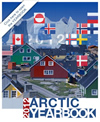Introducing Joël Plouffe
 Joël Plouffe is a Research Fellow at the Raoul-Dandurand Chair of Strategic and Diplomatic Studies at the Université du Québec à Montréal (UQAM). He is also a Canadian Defence & Foreign Affairs Institute Fellow (CDFAI), and is a US State Department International Visiting Program Alumni (IVLP Arctic Security 2012). His research interests and publications deal mainly with the Geopolitics of the Arctic, Regions of the Circumpolar North, Security, Defence, US-Canada Foreign Policy, and International Relations.
Joël Plouffe is a Research Fellow at the Raoul-Dandurand Chair of Strategic and Diplomatic Studies at the Université du Québec à Montréal (UQAM). He is also a Canadian Defence & Foreign Affairs Institute Fellow (CDFAI), and is a US State Department International Visiting Program Alumni (IVLP Arctic Security 2012). His research interests and publications deal mainly with the Geopolitics of the Arctic, Regions of the Circumpolar North, Security, Defence, US-Canada Foreign Policy, and International Relations.
 Mr Plouffe is currently serving as Visiting Professor at the Jackson School for International Studies (JSIS) at the University of Washington in Seattle, where he co-teaches a Task Force on Arctic Security for the 2013 winter quarter.
Mr Plouffe is currently serving as Visiting Professor at the Jackson School for International Studies (JSIS) at the University of Washington in Seattle, where he co-teaches a Task Force on Arctic Security for the 2013 winter quarter.
Mr Plouffe is involved in various northern affairs related research groups and programs. He is a member of the Northern Research Forum Thematic Network on Geopolitics and Security, led by Dr Lassi Heininen from the University of Lapland (Finland); is actively involved in the annual Calotte Academy that takes place in the Barents Euro-Arctic Region; is project member of ArcticNet’s research group on Climate Change and Commercial Shipping in the Arctic, led by Dr Frédéric Lasserre of Université Laval in Québec City (Canada); and is Managing Editor of the Arctic Yearbook.
In August 2012, Joël Plouffe was embedded with Canada’s National Defence and Canadian Forces in the Western Arctic (Northwest Territories) during the annual ‘Operation Nanook’.
Joël Plouffe was born in the mining town of Sudbury, in Northern Ontario, Canada, and is now living in Montréal, Québec where he is working on his PhD thesis at the Department of Political Science of UQAM, looking at how the Arctic has influenced US foreign policy making from the Nixon presidency to President Barack Obama’s first mandate.
The interview with Joël Plouffe about the Arctic consists of two other parts as well:
Interview
Arctic Territorial Conflicts
What are the remaining territorial/maritime boundary conflicts in the Arctic and why are they so hard to resolve?
There are three boundary disagreements to be resolved in the Arctic zone: the Canada-US border in the Beaufort Sea (off Alaska and the Yukon); the Canada-Denmark border in the Lincoln Sea (off the northern tips of Canada’s Arctic archipelago and Greenland); and the highly mediatized land border on Hans Island (Denmark) in the Kennedy Channel of the Nares strait off Ellesmere Island (Canada) and Greenland.
The long-running legal dispute between Ottawa and Washington in the Beaufort Sea involves a wedge-shaped slice of the international border. Both countries disagree on where the boundary should actually be drawn: a strait line between Alaska and the Yukon, which is Canada’s position, or a line extended perpendicular to the coast, thus veering further east, which is the United States’ position. Legal experts from both countries have been pursuing bilateral discussions on this issue over the last years, meeting more frequently since 2010 to find some kind of compromise that would end this managed dispute and, as polar ice melts, prepare for more economic activities in that area like oil and gas extraction or commercial fisheries (in 2009 the Obama administration established a moratorium on commercial fisheries in those American waters).
It is highly likely that both governments are now feeling the pressure from major transnational corporations (i.e. Shell, BP, Exxon Mobil) who want to explore the contested area of the Beaufort. This issue should not be confused with the Canada-US disagreement over the legal status of the Northwest Passage (NWP), another longstanding managed dispute where Ottawa believes that these waters in Canada’s Arctic archipelago are internal, thus governed by Canadian laws. Washington disagrees with Ottawa’s position, arguing that the NWP is an international passage, therefore considered as a strait where freedom of the seas applies for all surface or underwater vessels, commercial or military (the US holds a similar position when dealing with Russia’s Northeast Passage, NEP).
In November 2012, Canada and the Kingdom of Denmark reached a tentative agreement on where to establish their shared maritime boundary in the Lincoln Sea, building on a 1973 delimitation treaty between both countries that had avoided establishing that Arctic border because of technical issues, say various experts. Ottawa and Copenhagen still need to negotiate the land border on the tiny Hans Island, an issue not addressed in this 2012 tentative deal. Some believe that the Hans Island issue will be resolved in 2013 following years of what now looks like fruitful negotiations. Others might disagree. In May 2012, the Ottawa Citizen quoted the Danish Ambassador to Canada saying that “There is no solution but there are several options on the table. It is difficult to say when (it will be solved) but it will be not for many years, that’s for sure. When it comes to Hans Island, it is serious stuff for both of us (Canada-Denmark)” (Ottawa Citizen, 2012). Uninhabited and measuring a whole 1.3 square kilometres, Hans Island might just be split in half between both countries, creating a tiny Canada-Denmark land border in the Arctic. Again, this dispute is managed between both countries, allies, who have been enhancing military cooperation in the North American Arctic over the last two years (i.e. during the summer exercises of Operation Nanook).
All countries certainly share an interest in resolving such unnecessary border disputes in shared areas that need to be responsibly governed and regulated by national laws, at a time when economic activities and environmental concerns are emerging like never before. Therefore climate change (polar ice melting) and the global economy (development of energy resources) are certainly pushing Arctic states to work together and find compromise.
Norway-Russian Border Agreement
Why did Norway and Russia manage to conclude a border agreement in 2010, and why had the negotiations taken around 40 years?
I would say potential revenues and long-term stability were the driving forces behind this agreement. Both countries are now pushing offshore developments higher north in the Barents Sea and the Arctic Ocean. In January 2013, the Norwegian government was to present a bill to Parliament that seeks to open two areas of the former contested Barents Sea ‘grey zone’ to oil and gas exploration. Before ratifying the 2010 agreement, the Barents Sea, or at least 175,000 square kilometres of it, was off-limits to hydrocarbon development or commercial fisheries.
This historical agreement between Russia and Norway, called the “Joint Statement on Maritime Delimitation and Cooperation in the Barents Sea and the Arctic Ocean”, was signed in Murmansk on 15 September 2010 (and entered into force in the summer of 2011), finally draws a line between both countries in the Barents Sea, thus putting an end to 40 years of long negotiations, now opening the contested zone (potentially rich in oil and gas) to transnational corporations and state owned enterprises. Indeed, months after ratifying the deal, it was reported that Russia and Norway had begun the process to start issuing licenses for 2013-2014 to oil and gas fields in their respective jurisdictions of the Barents Sea. Furthermore, the treaty also establishes conditions for bilateral commercial fishing management and joint regulations for that emerging industry in the Barents Sea. It is definitely a positive development for regional stability and international security.
During the last forty years, while Moscow continued to basically assert that the sector line from its coast to the North Pole was the maritime boundary, Oslo continued to disagree with its neighbour. The Norwegians also needed to cope with other special circumstances put forward (geographical or not) by the Soviets (and the Russians) that brought negotiations to a sort of deadlock in the Barents. In a 2011 paper, Henriksen and Ulfstein develop the chronological evolution of this border dispute, pointing out that following a proposal for joint petroleum development made by the USSR and rejected by Norway in 1988, “(p)rogress was made in 2007 when the parties agreed to revise the 1957 Varangerfjord Agreement to extend the maritime boundary to a point approximately 30 kilometres from the terminus of the Varangerfjord, where the median line and sector line cross and the southern part of the disputed area began. The boundary agreed on is consistent with a simplified median line” (Henriksen & Ulfstein, 2011:4).
As the ‘grey zone’ has disappeared, access to and exploration of both continental shelves can be achieved without conflict, thus fostering continued cooperation between Russia and Norway.
